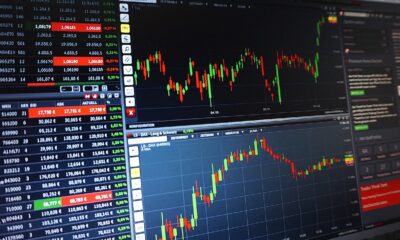Biotech
Marsi Bionics Obtains €1 Million from the Government
In 2021, the company achieved a CE marking from the European Union for the world’s first exoskeleton to help pediatric patients with spinal muscular atrophy (SMA) walk. The tagging makes it possible to transfer robotic research developed in laboratories to hospitals and rehabilitation clinics to care for children with neuromuscular diseases on an international scale.

Marsi Bionics, the Spanish company specializing in the development of technology for the therapy of neurological diseases in childhood, has received €1 million from the Government to advance the development of its devices, according to Elena García, the company’s CEO.
The Rivas-Vaciamadrid (Madrid) company has received this aid from the Center for Industrial Technological Development (Cdti). Marsi Bionics will use the resources to launch a new project called Explorer.
The project that will be carried out by Marsi Bionics involves the research and development of a new range of exoskeletons for use in rehabilitation at home. “The objective is to extend the use of technology to the family and daily environment of the patient,” added García.
Read more about Marsi Bionics and find the most important business news of the day with our companion app Born2Invest.
The company intends to develop a new range of exoskeletons for home use
In 2021, the company achieved a CE marking from the European Union for the world’s first exoskeleton to help pediatric patients with spinal muscular atrophy (SMA) walk. The tagging makes it possible to transfer robotic research developed in laboratories to hospitals and rehabilitation clinics to care for children with neuromuscular diseases on an international scale. The exoskeleton can be used in the treatment of pediatric patients with spinal muscular atrophy or cerebral palsy.
Marsi Bionics develops robotic exoskeletons with joints of variable stiffness, which simulate the movement of muscles and tendons with the aim of improving the gait of patients with neuromuscular diseases.
The company has the Atlas 2030 pediatric exoskeleton, which is designed for the physical therapy of children with neurological involvement such as cerebral palsy, spinal cord injury, and neuromuscular diseases such as SMA and myopathies. The dimensions are adjustable to growth between four and ten years. The other product is MAK Active Knee, an active orthosis that has applications in rehabilitation after total knee arthroplasty, with a 66% reduction in rehabilitation times.
The business model developed by the company is a B2B one in which exoskeletons are supplied to hospitals and rehabilitation centers for their application in patients, both as property and as a medical device as a service (renting or pay per use).
Marsi Bionics products are designed for the rehabilitation of a wide range of pathologies that affect more than forty million people
In parallel, the company has a round of financing of €6 million open, although at the moment it is unknown when it will be able to close it. Marsi Bionics is a spin-off of the Center for Automation and Robotics (CAR), a joint center of the Polytechnic University of Madrid (UPM) and the Higher Council for Scientific Research (Csic).
The company participates in numerous clinical trials in different hospitals and specialized centers, in addition to its laboratory, Marsi Care, where it conducts research with children and adults to improve its designs and test their usefulness.
Elena García, a graduate in Robotics and Artificial Vision from the UPM and in Industrial Engineering (specializing in Electronics and Automotive) from the same center, founded Marsi Bionics in 2013. García was the principal investigator (2007-2019) for the Center for Automotive and Robotics until he decided to found Marsi Bionics.
The company’s products are modular (from single-joint active orthoses to trunk-hip-knee-ankle-foot complete exoskeletons) and are designed for the rehabilitation of a wide range of pathologies that affect more than forty million patients in the world.
__
(Featured image by Bessi via Pixabay)
DISCLAIMER: This article was written by a third party contributor and does not reflect the opinion of Born2Invest, its management, staff or its associates. Please review our disclaimer for more information.
This article may include forward-looking statements. These forward-looking statements generally are identified by the words “believe,” “project,” “estimate,” “become,” “plan,” “will,” and similar expressions. These forward-looking statements involve known and unknown risks as well as uncertainties, including those discussed in the following cautionary statements and elsewhere in this article and on this site. Although the Company may believe that its expectations are based on reasonable assumptions, the actual results that the Company may achieve may differ materially from any forward-looking statements, which reflect the opinions of the management of the Company only as of the date hereof. Additionally, please make sure to read these important disclosures.
First published in PlantaDoce, a third-party contributor translated and adapted the article from the original. In case of discrepancy, the original will prevail.
Although we made reasonable efforts to provide accurate translations, some parts may be incorrect. Born2Invest assumes no responsibility for errors, omissions or ambiguities in the translations provided on this website. Any person or entity relying on translated content does so at their own risk. Born2Invest is not responsible for losses caused by such reliance on the accuracy or reliability of translated information. If you wish to report an error or inaccuracy in the translation, we encourage you to contact us.

-

 Biotech2 weeks ago
Biotech2 weeks agoJohnson & Johnson’s Tecvayli Combo Shows Breakthrough Results in Multiple Myeloma
-

 Africa2 days ago
Africa2 days agoMorocco’s Rising Country Risk Profile Boosts Investor Confidence
-

 Cannabis1 week ago
Cannabis1 week agoTrump Signals Historic Shift: U.S. Weighs Reclassifying Cannabis from Schedule I to III
-

 Crypto6 days ago
Crypto6 days agoHyperliquid Proposes Burning $1B in HYPE to Make Supply Deflationary

























